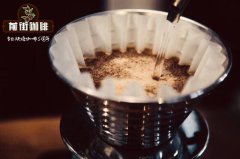Coffee beans are processed in three ways. Each step of the coffee washing process is important.

Professional coffee knowledge exchange more coffee bean information please follow the coffee workshop (Wechat official account cafe_style)
Qianjie-introduction to coffee processing
Wet refining (Wet Process): also known as washing treatment (Washed)
Use the refinement of water. The next step is to explain that water is also used in semi-washing refining, so wet refining is also known as "full washing (Fully Washed)" to make a distinction. Washing treatment will first use a pulp removal machine called "Pulper" to wash and peel off the peel and pulp of the fruit. However, the pectin attached to the endocarp cannot be completely removed through the pulp removal machine, so the fruit will be soaked in a large trough for about one night. In this way, the fermentation of microorganisms in the water can decompose the pectin, then clean the smooth material on the surface, and then remove the raw beans wrapped in pectin.
The raw beans at this stage are called "shelled beans". They are usually preserved in this form, and then the thin shell (thin film) of the endocarp is removed and then exported. After the invention of the pulp removal machine in the 1850s, washing treatment began to be used in regions such as the Caribbean, and later became the mainstream refining method all over the world.
Insolation
Solarization is a method of treatment that originated in Ethiopia and returned to the original. The pulp of the coffee is left on the beans, and there is little damage to the coffee during drying. Although it requires less investment, it still needs certain climatic conditions to ensure that the pulp and seeds are dried in time.
With the passage of time, sun treatment is considered to be a low-quality treatment, because it can not guarantee the consistency of coffee flavor. This inconsistency is usually the result of the interaction between immature and ripe coffee cherries.
However, many people think that tanning actually has the potential to create the most delicious coffee-a comeback is just around the corner. If consistency can be achieved, sun-cured coffee can have the same clear flavor characteristics as washed coffee, while providing some more interesting aromas.
Honey treatment
If handled correctly, honey-treated coffee beans taste as if someone had added honey and brown sugar to the coffee-although the name actually comes from the stickiness of the coffee beans during processing. In many ways, honey treatment is somewhere between washing and tanning: it has a fruity flavor, but not as exaggerated as some sun-dried coffee beans. Its acidity is usually more round than washed coffee beans, with a strong sweetness and complex taste.
Honey treatment is closely related to Costa rica. in recent years, honey treatment has developed a series of treatment methods: yellow honey, red honey, gold honey, black honey and white honey. This reflects the effect of this treatment on the flavor and overall characteristics of coffee. This is most likely a highly scientific process that can affect the sweetness and body of coffee by controlling the amount of gum. Usually, the more gum left on the beans, the stronger the sweetness.
Knowledge: coffee beans are the fruits of coffee trees, which belong to perennial evergreen shrubs or small trees of Rubiaceae.
In short: Qianjie is a coffee research hall, happy to share the knowledge about coffee with you, we share unreservedly just to make more friends fall in love with coffee, and there will be three low-discount coffee activities every month. The reason is that Qianjie wants to make more friends drink the best coffee at the lowest price, which has been Qianjie's tenet for 6 years!
END
Important Notice :
前街咖啡 FrontStreet Coffee has moved to new addredd:
FrontStreet Coffee Address: 315,Donghua East Road,GuangZhou
Tel:020 38364473
- Prev

The main processing methods of coffee beans are washing treatment. The coffee washed is clean.
Professional coffee knowledge exchange more coffee bean information please follow the coffee workshop (Wechat official account cafe_style) Front Street-Coffee processing methods Water washing treatment (Washed) peeling and fermentation, after at least three times of screening, little residual pectin, shortest drying time, clean flavor, high acidity, low chance of defects. Processing method: after picking ripe fruit of coffee
- Next

Processing method of washing coffee beans Clean coffee is not easy to come by
Professional coffee knowledge exchange more coffee bean information please follow the coffee workshop (Wechat official account cafe_style) Front Street-Coffee washing processing introduction Wet processing in 1740 the Dutch invented wet processing, process flow, including the simple harvest of fresh fruit, flotation machinery, peeling, fermentation, degumming, washing and drying (sun or machine drying) to remove shells and take beans. Specifically, it is: picking first
Related
- Beginners will see the "Coffee pull flower" guide!
- What is the difference between ice blog purified milk and ordinary milk coffee?
- Why is the Philippines the largest producer of crops in Liberia?
- For coffee extraction, should the fine powder be retained?
- How does extracted espresso fill pressed powder? How much strength does it take to press the powder?
- How to make jasmine cold extract coffee? Is the jasmine + latte good?
- Will this little toy really make the coffee taste better? How does Lily Drip affect coffee extraction?
- Will the action of slapping the filter cup also affect coffee extraction?
- What's the difference between powder-to-water ratio and powder-to-liquid ratio?
- What is the Ethiopian local species? What does it have to do with Heirloom native species?

